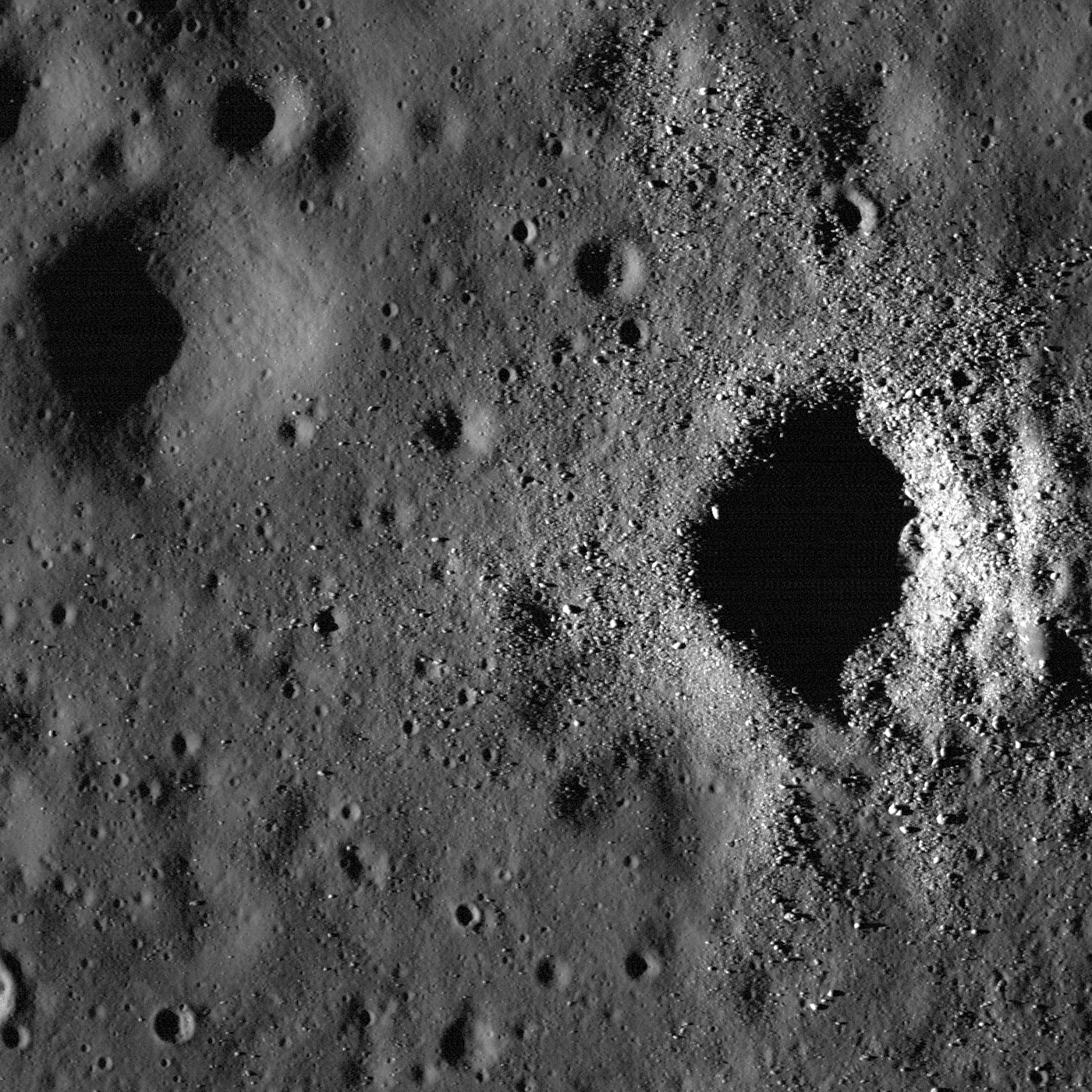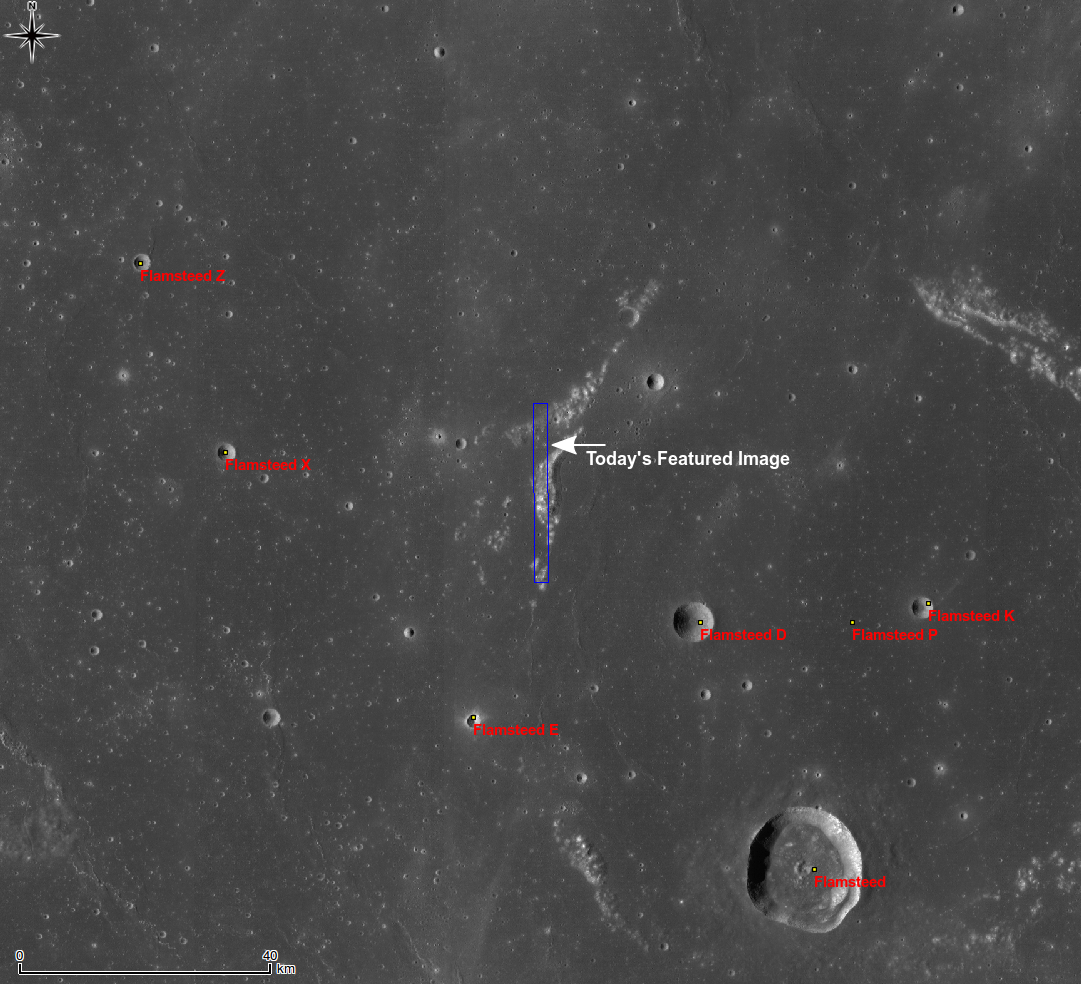
Today's Featured Image is a great example of typical young and old craters. The crater on the right with lots of boulders spreading out of the cavity is a young, fresh crater. The crater to the left has a smoother surface without recognizable boulders, and has an overall subdued or degraded shape. They are about the same size and both formed in mare basalt. The older example likely had a similar morphology when it formed originally.
Astronomical numbers of small impacts over time are believed to be the main factor breaking boulders into small pieces and smoothing the surface (think of this process as cosmic sand blasting). If you are very patient, visit the crater on the right in about a billion or two years and you will see it looking similar to the degraded crater on the left. Be careful though - when you show up the crater on the left may no longer be around!
Explore two contrasting craters by viewing the full NAC frame!
Related posts:
Small crater in Oceanus Procellarum, High Noon at Tranquility Base, Terraced Craters in Aitken Crater
Published by Hiroyuki Sato on 5 April 2011
